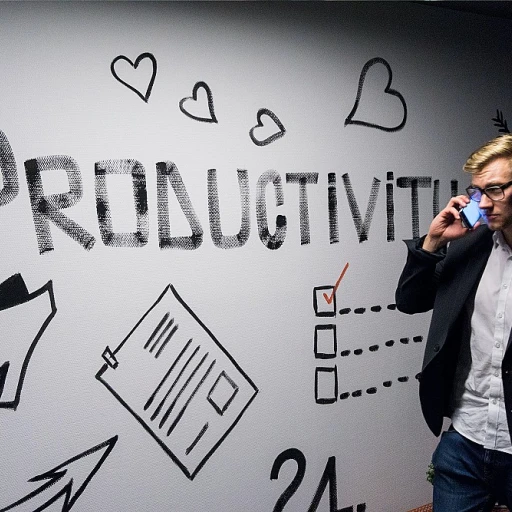
Understanding the New Work Environment
Embracing the Rapid Transition
The work environment today is undergoing rapid transitions, necessitating a comprehensive understanding of the ever-evolving landscape. These changes will significantly influence how organizations approach business strategies. With increased focus on technology integration and employee well-being, businesses must adapt to remain competitive.
The Importance of Change Management
Change management serves as a crucial aspect of handling this evolution. Leaders are tasked with developing an effective action plan that acknowledges the organizational changes and supports teams through uncertain times. By providing clear direction and resources, organizations can help employees feel more secure during transitions.
Navigating Uncertain Times
In these uncertain times, businesses must deploy strategies that not only focus on productivity but also address mental health and support work-life changes. Managing change effectively involves preparing change leaders and key stakeholders to actively participate in the change process. This approach ensures employees feel supported, improving overall morale and engagement.
Creating an Inclusive Team Culture
As the nature of work evolves, fostering a culture of inclusivity becomes imperative. Organizational change needs to go hand in hand with efforts to ensure diversity and inclusion are prioritized. Teams that represent a wide range of perspectives are better equipped to handle complex challenges and drive innovative solutions.
The Role of Technology in Shaping Work
The Intersection of Technological Progress and Work Evolution
In an era defined by rapid technological advancements, organizations face both challenges and opportunities when it comes to the integration of new technologies in their business operations. The inevitability of technological change requires a strategic approach to manage change, ensuring that both leadership and employees are well-prepared for what lies ahead. Technological innovations serve as catalysts for organizational change, altering traditional work environments. The incorporation of automation, machine learning, and artificial intelligence is not just reshaping industries but the very nature of work itself. With these changes, organizations must implement a comprehensive change management strategy to address potential disruptions. This involves crafting a forward-thinking action plan, equipping teams to harness technology effectively, and fostering an adaptive mindset among employees. Adopting new technologies must be aligned with an understanding of the human experience at work. As key stakeholders in the transformation process, employees should feel supported and valued, which is critical during uncertain times. Change team leaders can proactively engage with their workforce, helping to mitigate any resistance to new processes. Moreover, this aids in maintaining mental health stability amidst significant life changes. For leaders, managing change also involves investing in employee education and continuous professional development, ensuring they are primed to thrive in a technologically empowered workplace. Strategic planning will help businesses prepare for these shifts, evolving their organizational culture to one that embraces technological progress and innovation. As studies and reports suggest, the successful transition to tech-driven environments hinges on employee involvement in the change process and clear communication about the benefits and expectations of a transformed workplace. This well-rounded approach to navigate organizational change will not only drive business growth but also enhance job satisfaction and overall work-life balance for employees.Developing Skills for the Future
Equipping for Tomorrow: Skill Development Strategies
In an era characterized by rapid organizational changes, employees are expected to continually adapt to new demands. As technology reshapes the business landscape, it's crucial for teams to develop a strategic action plan that focuses on acquiring skills relevant for the future. This is not just about technical skills; soft skills like emotional intelligence, adaptability, and critical thinking play a vital role in navigating the evolving work environment. In uncertain times, organizations must prioritize lifelong learning to manage change effectively. A comprehensive skill development strategy should include these aspects:- Identify Key Skills: Leaders should work closely with employees to define what skills are essential for their roles in the context of continuous change. Knowing what skills to develop helps in preparing for future challenges and ensures the team stays relevant.
- Diverse Learning Methods: Offering a mix of interactive online courses, mentorship opportunities, and hands-on projects allows employees to learn in ways that best suit their learning styles. This diversity in learning approaches can enhance engagement and retention.
- Embed Learning in Everyday Work: Encourage a culture where learning is integrated into daily work activities. This approach not only helps employees feel supported but also turns the workplace into an ongoing educational environment.
- Feedback and Evaluation: Implement regular feedback sessions to track progress and provide support for employees. Understanding areas of improvement will help in refining skills that contribute to organizational success.
- Leverage Technology: As organizations change, using platforms and tools that enable flexible, scalable, and personalized learning experiences is essential. These resources not only facilitate skill acquisition but also enhance the overall adaptability of employees.
Adapting to Remote and Hybrid Work Models
Embracing Flexibility in Work Models
The shift to remote and hybrid work models is not just a temporary response to global events; it represents a fundamental change in how organizations operate. As businesses navigate these uncertain times, leaders must develop an action plan that supports both organizational goals and employee well-being. This involves understanding the dynamics of remote work and implementing effective change management strategies.
Supporting Employees Through Change
To manage change effectively, organizations need to ensure that employees feel supported. This means providing the necessary tools and resources to work efficiently from any location. Leaders should focus on creating an inclusive environment where team members can thrive, regardless of their physical location. This approach will help employees adapt to life changes and maintain their mental health during transitions.
Building a Resilient Team
Leadership plays a crucial role in preparing for organizational change. By fostering open communication and encouraging feedback, leaders can build trust within their teams. It's essential to involve key stakeholders in the change process to ensure that everyone is aligned with the organization's vision. This collaborative approach will help manage change more effectively and prepare the team for future challenges.
Developing an Organizational Change Plan
Organizations change over time, and having a robust change management plan is vital for success. This plan should outline clear objectives, timelines, and responsibilities. By setting realistic expectations and providing ongoing support, leaders can guide their teams through transitions smoothly. Preparing for change is not just about managing the present; it's about equipping the organization for future growth and innovation.
Fostering a Culture of Continuous Learning
Emphasizing a Growth Mindset
Cultivating a culture of continuous learning is paramount in the ever-evolving landscape of work. As organizations undergo various changes, fostering a growth mindset among employees and management becomes a vital part of the change process. Encouraging a mindset that is open to learning new skills and embracing change will help employees feel valued and engaged, especially during uncertain times. Leadership plays a crucial role in this, as leaders who prioritize and champion lifelong learning set a precedent for their team.Implementing Structured Learning Opportunities
Organizations can benefit from creating structured learning and development programs that align with business objectives. This not only prepares employees to tackle future challenges but also supports the overall strategic action plan of the organization.- Create On-demand Learning Platforms: Implement online courses, workshops, and mentorship programs.
- Encourage Cross-departmental Collaboration: Facilitate opportunities for employees to work across different teams to learn new things and develop additional skills.
- Provide Support for Continued Education: Consider scholarships or educational assistance programs to support employees pursuing further education related to their roles.












